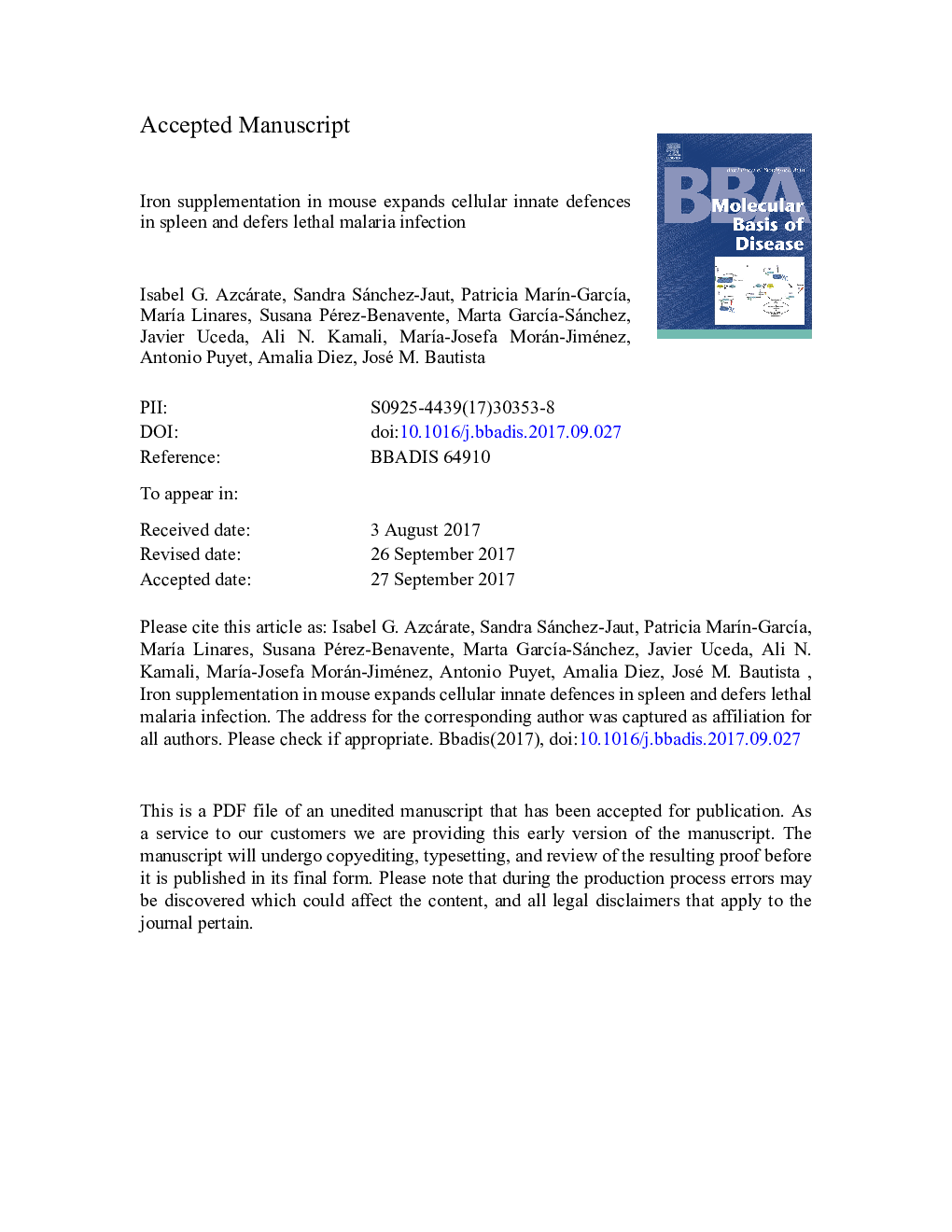| Article ID | Journal | Published Year | Pages | File Type |
|---|---|---|---|---|
| 5500925 | Biochimica et Biophysica Acta (BBA) - Molecular Basis of Disease | 2017 | 33 Pages |
Abstract
The co-endemicity of malnutrition, erythrocytopathies, transmissible diseases and iron-deficiency contribute to the prevalence of chronic anaemia in many populations of the developing world. Although iron dietary supplementation is applied or recommended in at risk populations, its use is controversial due to undesirable outcomes, particularly regarding the response to infections, including highly prevalent malaria. We hypothesized that a boosted oxidative stress due to iron supplementation have a similar impact on malaria to that of hereditary anaemias, enhancing innate response and conditioning tissues to prevent damage during infection. Thus, we have analysed antioxidant and innate responses against lethal Plasmodium yoelii during the first five days of infection in an iron-supplemented mouse. This murine model showed high iron concentration in plasma with upregulated expression of hemoxygenase-1. The sustained homeostasis after this extrinsic iron conditioning, delayed parasitemia growth that, once installed, developed without anaemia. This protection was not conferred by the intrinsic iron overload of hereditary hemochromatosis. Upon iron-supplementation, a large increase of the macrophages/dendritic cells ratio and the antigen presenting cells was observed in the mouse spleen, independently of malaria infection. Complementary, malaria promoted the splenic B and T CD4 cells activation. Our results show that the iron supplementation in mice prepares host tissues for oxidative-stress and induces unspecific cellular immune responses, which could be seen as an advantage to promote early defences against malaria infection.
Related Topics
Life Sciences
Biochemistry, Genetics and Molecular Biology
Ageing
Authors
Isabel G. Azcárate, Sandra Sánchez-Jaut, Patricia MarÃn-GarcÃa, MarÃa Linares, Susana Pérez-Benavente, Marta GarcÃa-Sánchez, Javier Uceda, Ali N. Kamali, MarÃa-Josefa Morán-Jiménez, Antonio Puyet, Amalia Diez, José M. Bautista,
